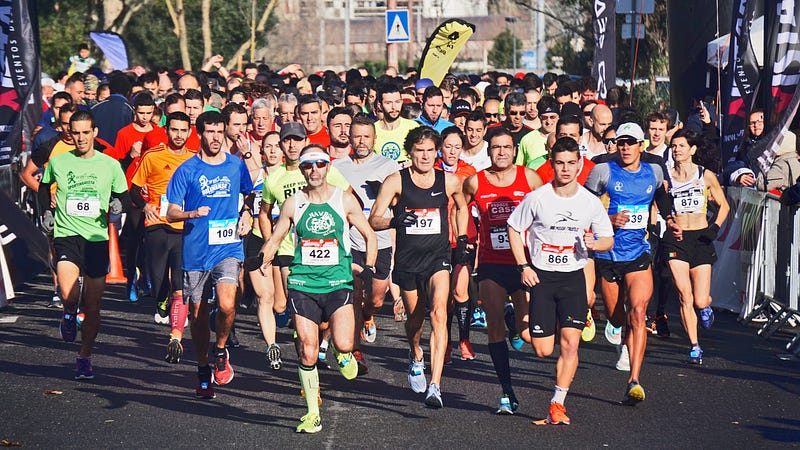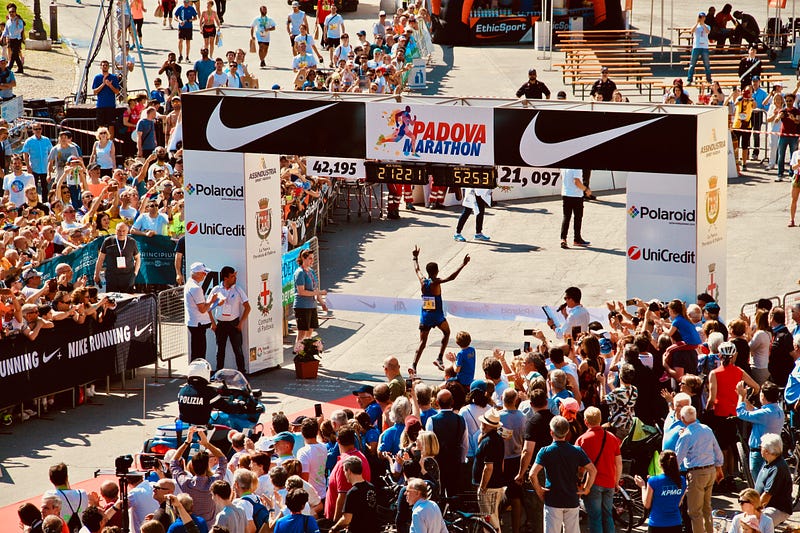Mastering the 10km: Achieve Your Best Time in Just 3 Months
Written on
Chapter 1: Understanding the 10km Challenge
The 10km race poses a significant challenge for runners due to its combination of speed, strength, and endurance. Many seasoned athletes, whether on the track or marathon courses, find this distance particularly demanding. If your goal is to enhance your overall running capabilities, dedicating your efforts to mastering the 10km is an excellent choice.
In this guide, I will outline three targeted workouts and share various tips to simplify and enhance your racing experience. It's common for athletes to excel either in mileage or speed training, but the real challenge lies in integrating these elements to optimize performance on race day without risking injury.
To ensure you achieve a new personal best, let’s unravel the complexities of the 10km race.

Note: I’m not a professional runner or coach, but these insights stem from my experience as a kinesiologist and enthusiastic road runner. Each individual reacts differently to training, so it's crucial to adjust based on your fitness level and consult a healthcare professional if you have any injuries or health concerns before starting this program.
Chapter 2: Essential Workouts for 10km Success
We’ll begin with three specific workouts designed to build speed and endurance for the 10km distance. Feel free to adjust the volume, rest periods, or intensity as necessary to align with your current fitness level and goals. The aim is to commit to three months of consistent training leading up to your race day.
Section 2.1: The Long Run
The long run is a staple in any runner's training regimen. It's essentially your longest effort of the week, which can vary from easy miles to more intense progressive or fartlek sessions. For the 10km, aim to run 15-20% longer than the race distance. Beginners should target 8-9 miles at their peak, while more advanced runners can aim for 15-20 miles.
Maintain a marathon pace—this should feel manageable yet challenging. Consider adding some variation by gradually increasing your pace throughout the run or incorporating fartlek intervals of 2-5 minutes at easy and moderate paces.
While long runs build a solid aerobic base, they can feel tedious. To combat this, listen to podcasts or music, or run with a buddy. Remember to increase your distance gradually, ideally no more than 10% per week, peaking three weeks before race day.
Section 2.2: Threshold Workouts
Threshold training is vital for enhancing speed endurance. This workout involves running just below your anaerobic threshold to improve your ability to maintain a challenging pace while efficiently clearing lactic acid from your system.
Finding your threshold pace can be achieved through heart rate monitoring or perceived exertion. For instance, a lactate threshold typically sits around 80% of your maximum heart rate. If you’re unsure of your maximum, you can use the Miller formula:
Miller formula = 217 - (0.85 x age), then multiply by 0.8 for your LT estimate.
Once you have this number, use it to guide your training:
- Warm up for 10 minutes, then gradually progress into threshold pace for 10 minutes, followed by 30-40 minutes at threshold pace.
- Warm up for 10 minutes, then complete 4 intervals of 10 minutes at threshold pace with 90 seconds of rest in between.
- Warm up for 10 minutes, then perform 6 intervals of 8 minutes at threshold pace with 60 seconds of rest.
Section 2.3: Hill and Tempo Training
Hills and tempo work are essential for building speed and strength. This workout should prepare you for the varied terrain of most 10km courses while improving your leg turnover for a strong finish.
Tempo training involves running slightly faster than race pace for less than the distance of the race. Aim for a pace that is 10-20 seconds quicker than your goal race pace, pushing into zone 4 of your heart rate.
Here are three variations for this workout:
- Six 45-second hill climbs with a jog back down, followed by 1 mile at tempo pace (repeat 2-3 times).
- Four to six 5-minute intervals at tempo pace on a hilly course with 2-3 minutes of rest.
- Continuously run 3-5 miles at tempo pace on a hilly route.
Chapter 3: Additional Tips for Race Day
Alongside your workouts, consider these strategies to enhance your performance both during training and on race day:
- Recovery Matters: Prioritize sleep (7.5-8 hours), maintain a balanced diet, hydrate, and incorporate light strength training.
- Incorporate Strides: After easy runs, practice strides—short, fast sprints that help improve form and speed.
- Choose the Right Shoes: Get fitted for quality running shoes tailored to your running style and distance.
- Taper Properly: Reduce your mileage and intensity leading up to the race to ensure you feel fresh and ready.
- Know the Course: Familiarize yourself with the race layout to anticipate challenges and plan your strategy.

Chapter 4: Video Resources for Enhanced Training
To further assist you in your training journey, here are two valuable videos that provide tips and strategies for running a faster 10km:
This video covers effective training tips to achieve a personal best in the 10km race.
In this video, a runner shares their experience of achieving a fast 10km time in just one year.
In Conclusion,
The 10km race is a demanding event that challenges both speed and endurance. However, with dedication and smart training, you can prepare effectively and achieve a new personal best. Follow the guidance provided, and you’ll be ready to cross the finish line with pride!
You've got this!
-David Liira, Kinesiologist